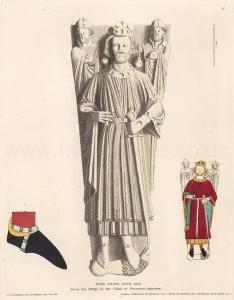Biting the Scabbard
Biting the Scabbard is in Feet Resting On.
After 1262. St Mary's Church, Boyton [Map]. Monument to Alexander Giffard. Believed to represent Alexander Giffard; possibly his father Hugh Giffard. Early Medieval Period effigy. Alexander fought on the Seventh Crusade and may possibly have died at the Battle of Mansoura in 1250. The effigy notable for the Otter at his feet, biting his sword, and for the  Giffard Arms on the shield with a label five points indicating the son, possibly grandson, of the current owner of the arms. The Otter may actually be a badly carved lion! Right Leg over Left.
Giffard Arms on the shield with a label five points indicating the son, possibly grandson, of the current owner of the arms. The Otter may actually be a badly carved lion! Right Leg over Left.
Hugh Giffard: Around 1195 he was born to Walter Giffard at Warminster, Wiltshire. Before 18 Mar 1217 Hugh Giffard and Sibyl Cormeilles were married. Around 1246 Hugh Giffard died at Warminster, Wiltshire.
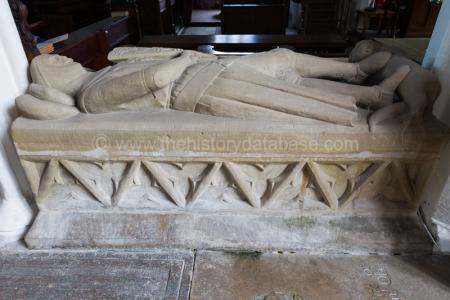
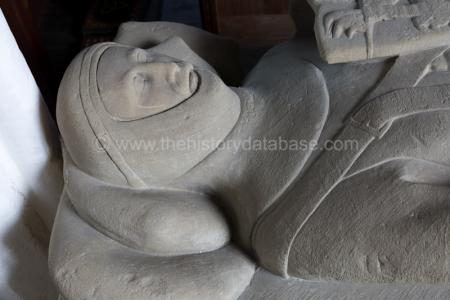
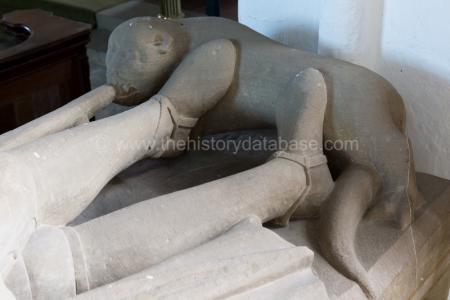
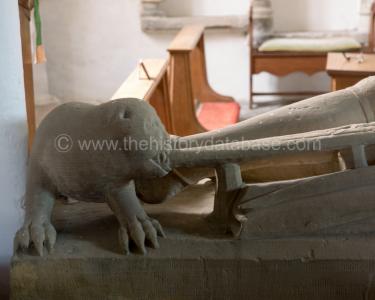
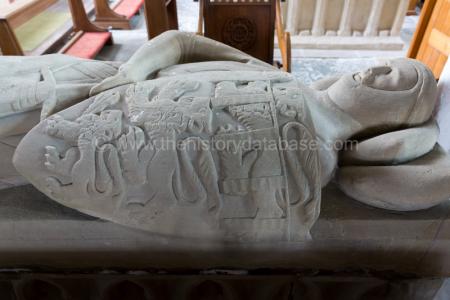
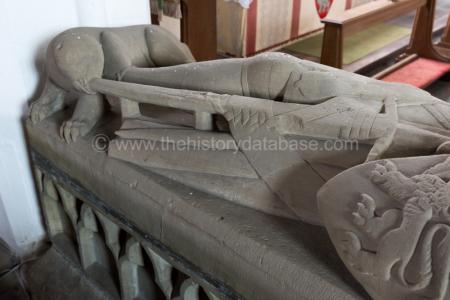
Effigy of King John. The effigy of John, carved in grey marble, which forms the superstructure of his present tomb, was originally the lid of the stone coffin that contained his remains, and in its first position must have been placed on a level with the floor of the building within which he was interred. His head is adorned with a crown of state and supported by two Bishops, undoubtedly intended for Oswald and Wulstan, between whose remains he, as before-mentioned, actually reposed. He is represented as wearing a dalmatic of crimson lined with green, the neck and cuffs edged with a gold and jewelled border; his tunic is yellow, or cloth of gold; he is girt with a belt; on his hands are jewelled gloves, a ring on the middle finger of his right hand, which supports a sceptre, while his left grasps a sword. He wears red hose, golden spurs, his feet have on them black shoes, and rest upon a lion [Note. Which is biting the scabbard]. The greater part of these details will be recognized as the ensigns of royalty.
